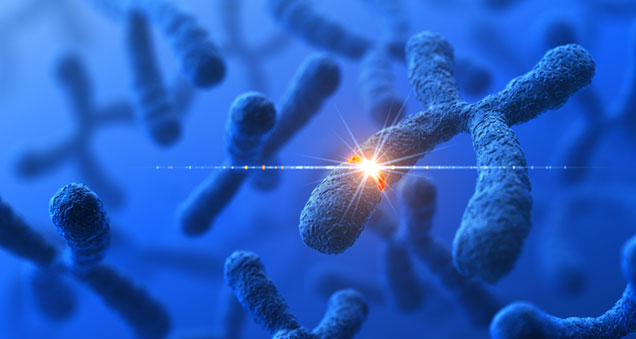Lynch syndrome affects approximately 85,000 Australians but only around five percent of people with the condition are currently diagnosed.
What is Lynch syndrome?
Lynch syndrome is an inherited genetic mutation that means a person has an increased chance of developing certain cancers during their lifetime, often at a younger age than the general population.
The genes in question are mismatch repair (MMR) genes including MLH1, MSH2, MSH6, PMS2, and EPCAM-TACSTD1. These genes are responsible for fixing mistakes made when DNA is copied to prepare for cell division, which is part of the body’s everyday repair and growth mechanism.
Usually a person will inherit two working copies of these genes, one from each parent. People with Lynch syndrome inherit a working copy and a non-working copy.
The defects in the MMR genes mean that copied DNA can contain mistakes – as cells divide, these errors accumulate and uncontrollable cell growth may lead to cancer.
Many cancers are associated with Lynch syndrome, including ovarian, stomach and pancreatic cancer. The most common cancers associated with the condition, however, are bowel cancer and endometrial cancer.
Pathology testing
Lynch syndrome is diagnosed via a blood test. It is an inherited condition and parents with Lynch syndrome have a 50% chance of passing the condition on to their children. Lynch syndrome cannot skip a generation so if a child does not inherit it, they cannot pass it on to their own children.
Risk factors, aside from a family history of Lynch syndrome, is a strong family history of cancer occurring at a younger than normal age such as below age 50. The first step in being tested is to speak to a doctor about your family history of cancer. If appropriate, a doctor will refer patients for genetic counselling and testing.
Lynch Syndrome Australia advises using their “3,2,1 rule” to help people decide if they are at risk:
3 or more family members (including you) have been diagnosed with a Lynch syndrome associated cancer.
2 consecutive generations or more are affected.
1 affected family member is diagnosed with a Lynch syndrome associated cancer before 50 years of age.
Benefits of testing
It is an individual decision whether or not to be tested for Lynch syndrome but a diagnosis can help someone to manage their cancer risk and can potentially help family members.
If deemed at risk, a person will be referred to a specialist service such as a hereditary cancer centre. A genetic counsellor talks through the options and answers any questions to help someone make their decision about getting tested.
If diagnosed, depending on which gene mutation someone has, enhanced monitoring or preventative procedures may be offered. For example, for people with an MLH1 or MSH2 gene mutation, annual colonoscopy is recommended from age 25, or age 30 if the mutation is in the MSH6 or PMS2 gene. For women with a TAH-BSO mutation, hysterectomy and oophorectomy (removing the ovaries) is recommended before the age of 40.
Lynch syndrome can also mean that cancer advances more quickly, so a diagnosis can help someone catch cancer earlier giving a better chance of successful treatment.
As people with Lynch syndrome are more susceptible to cancer at a younger age, a diagnosis can affect some life decisions, in particular for women of child-bearing age.
Lynch Syndrome Australia is committed to raising awareness about the condition so that early diagnosis can help people be better informed and make choices about their health and their future.

